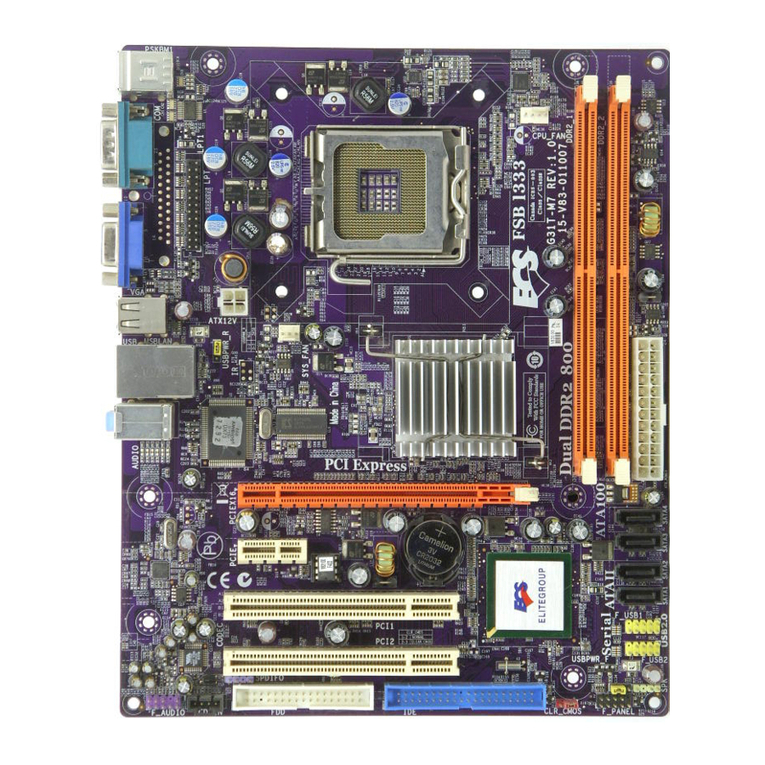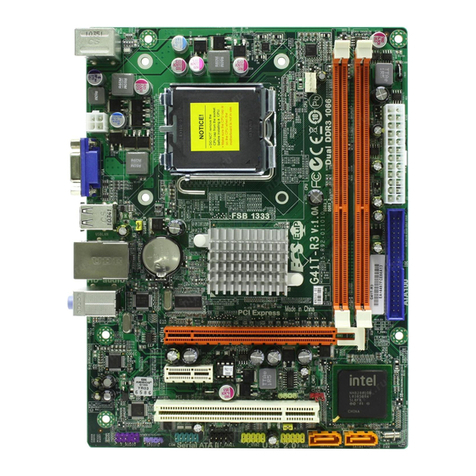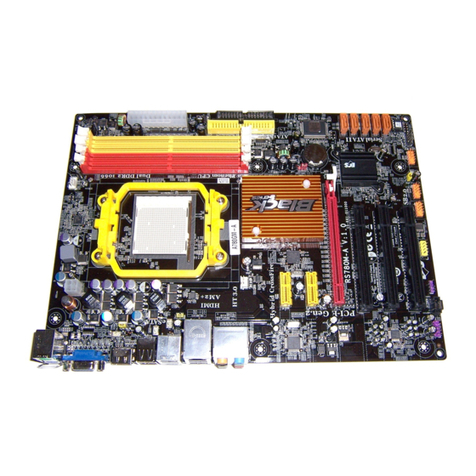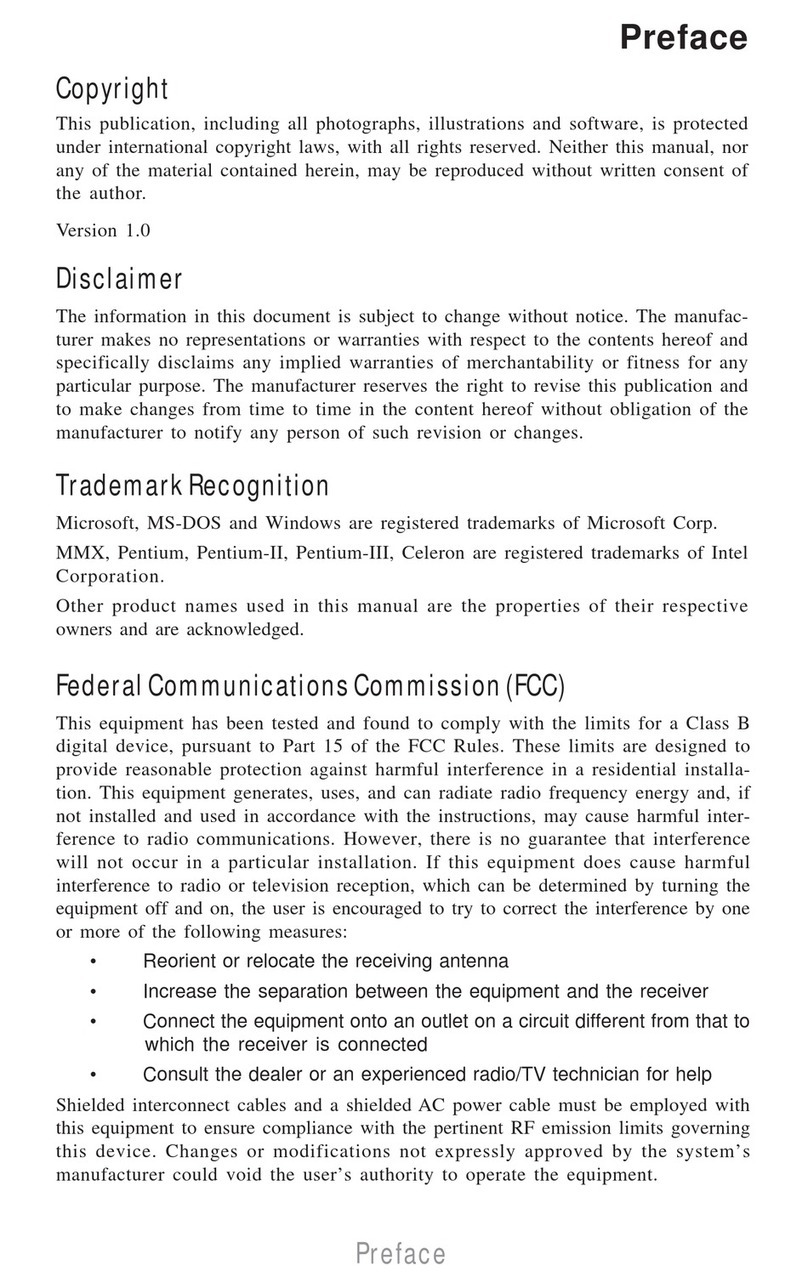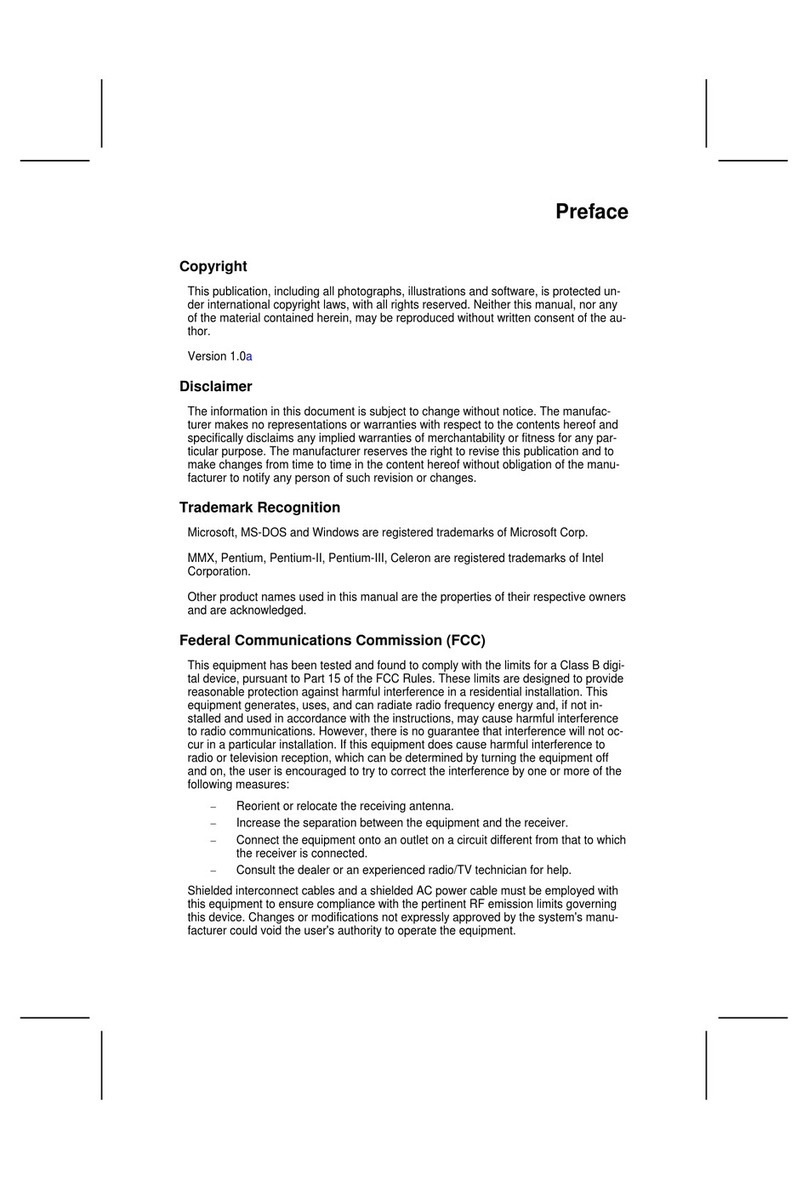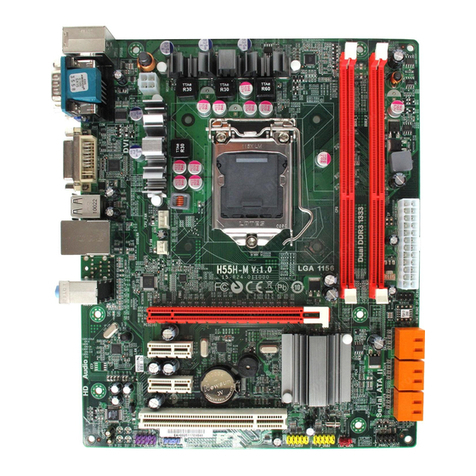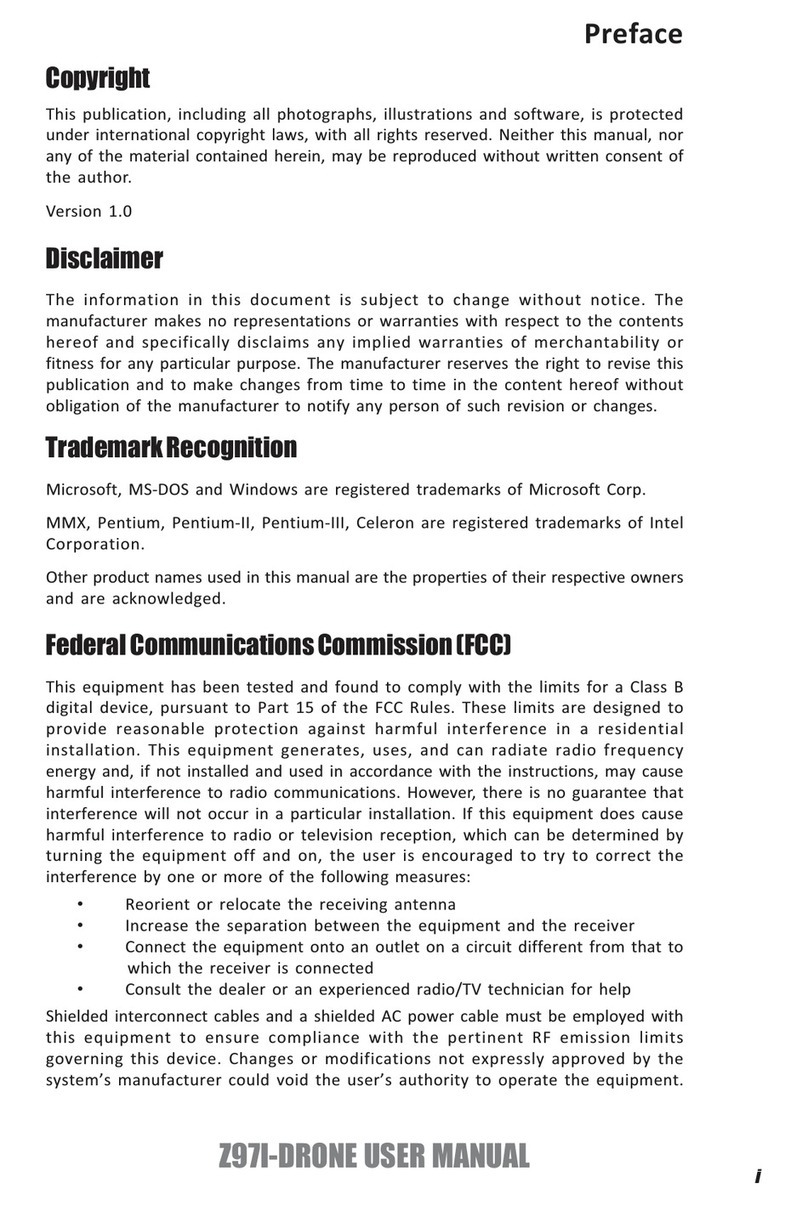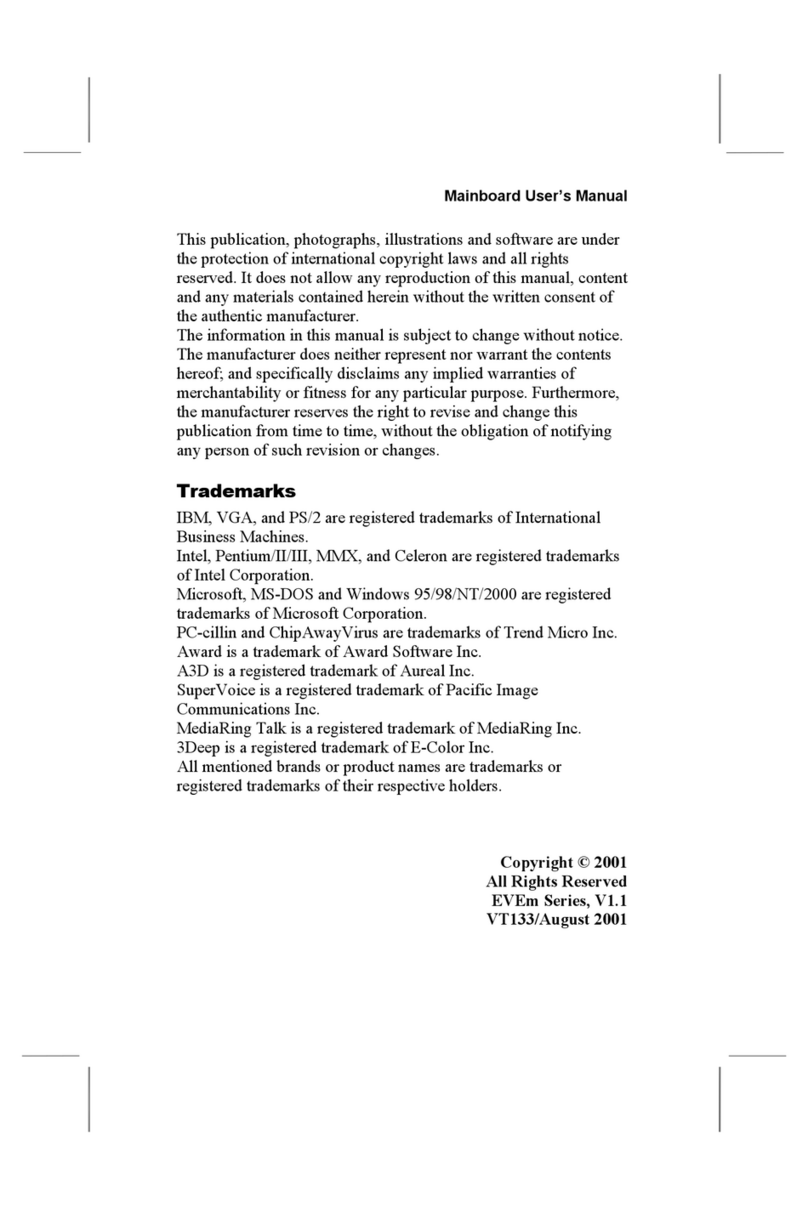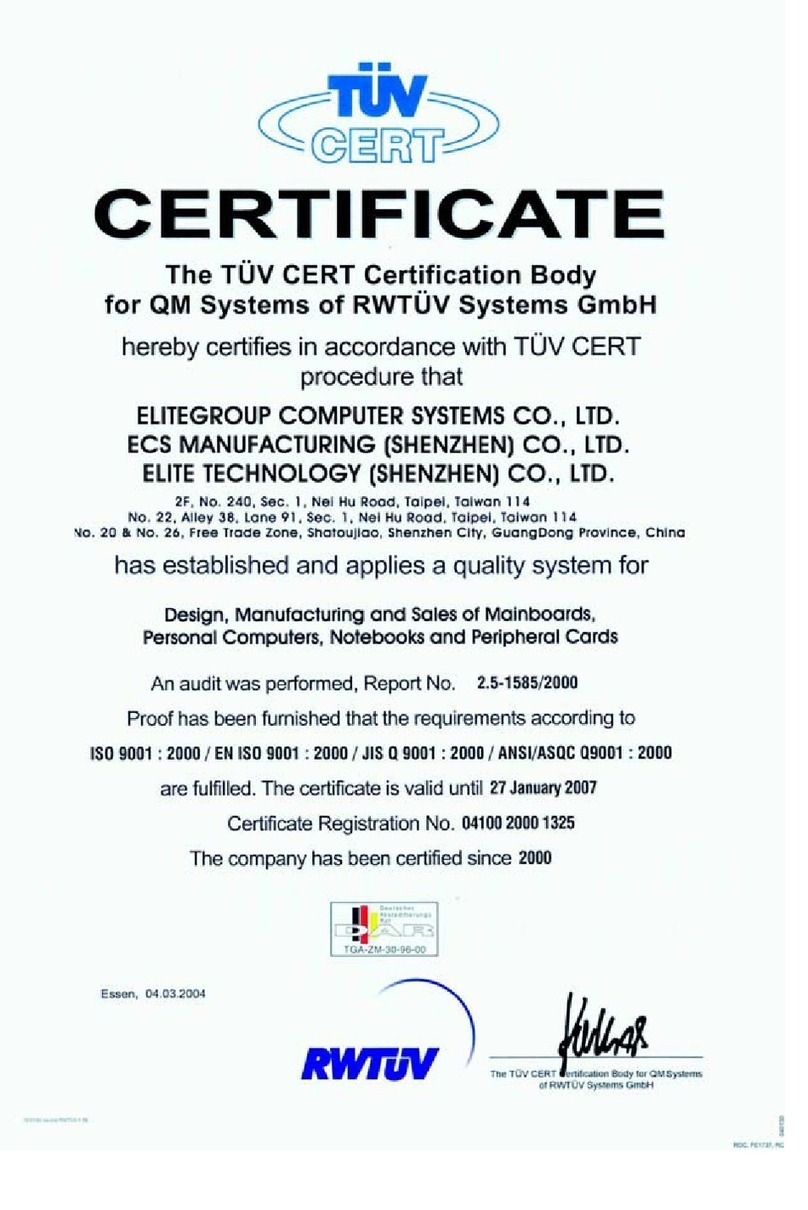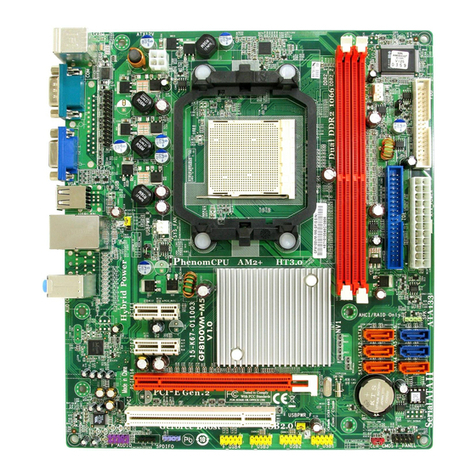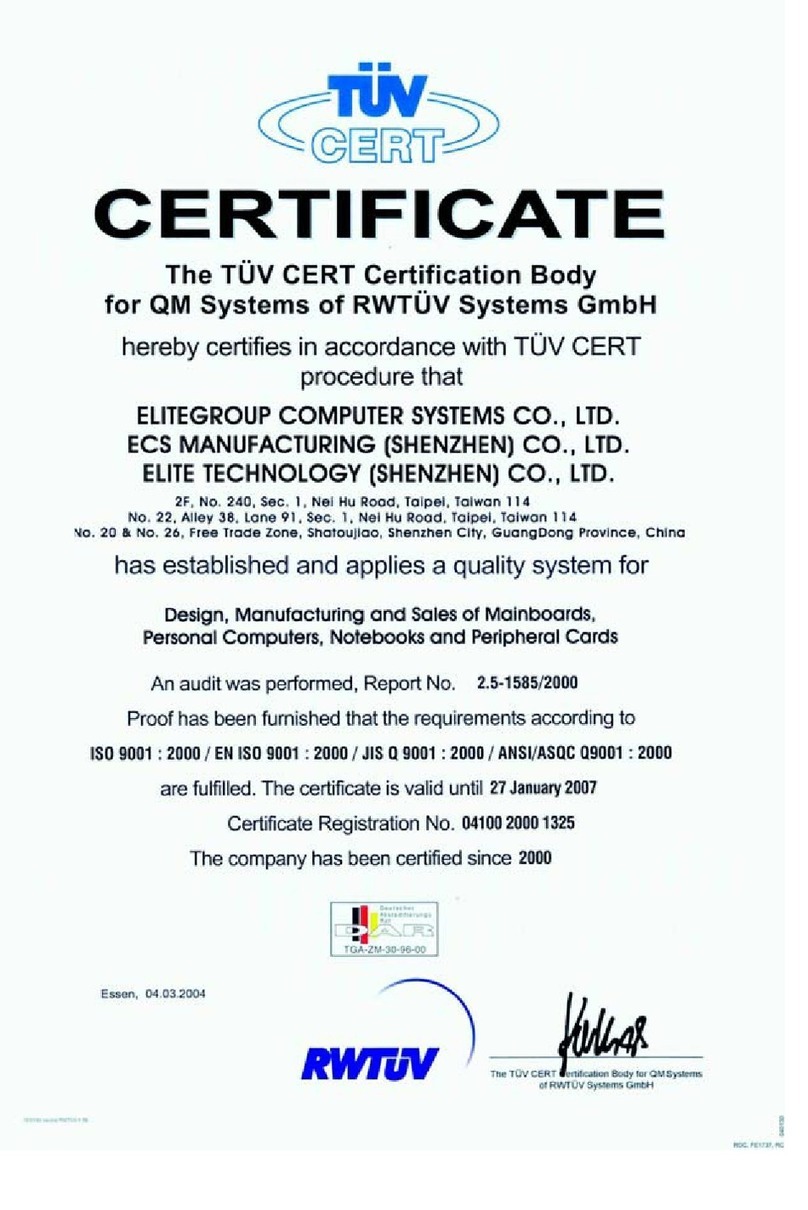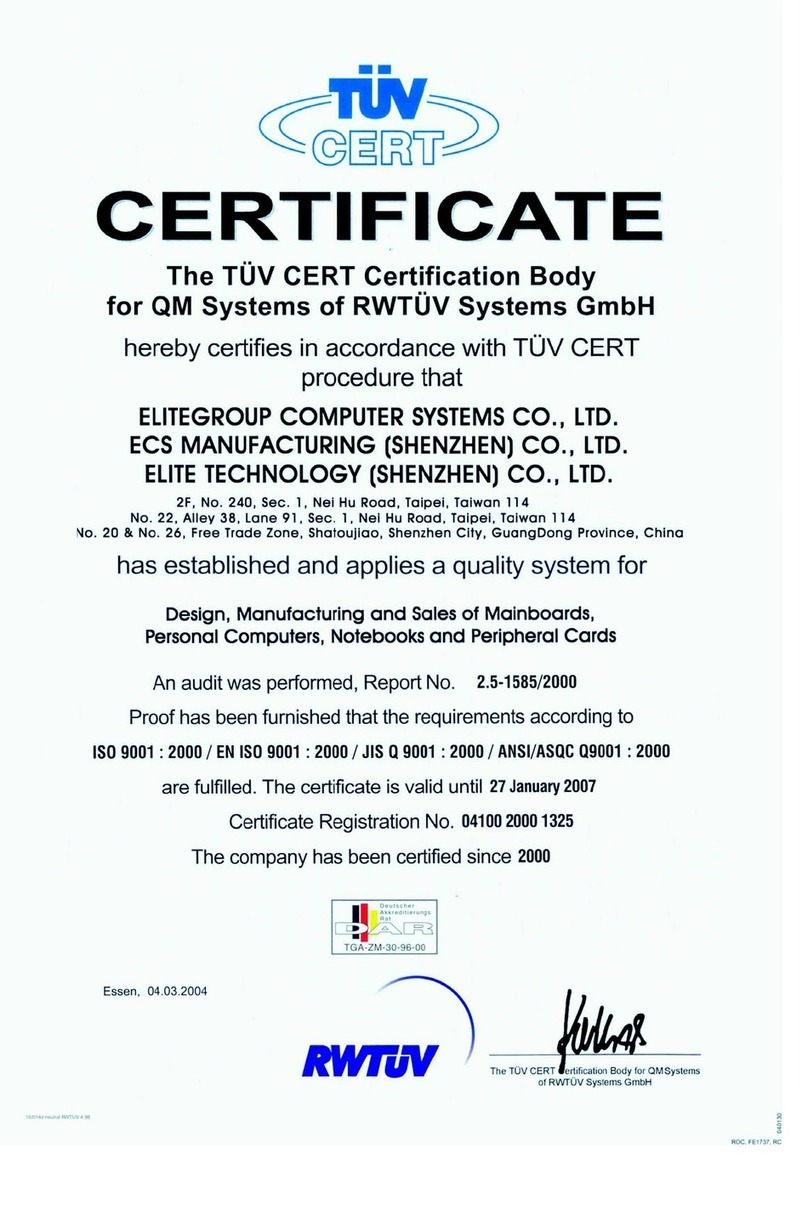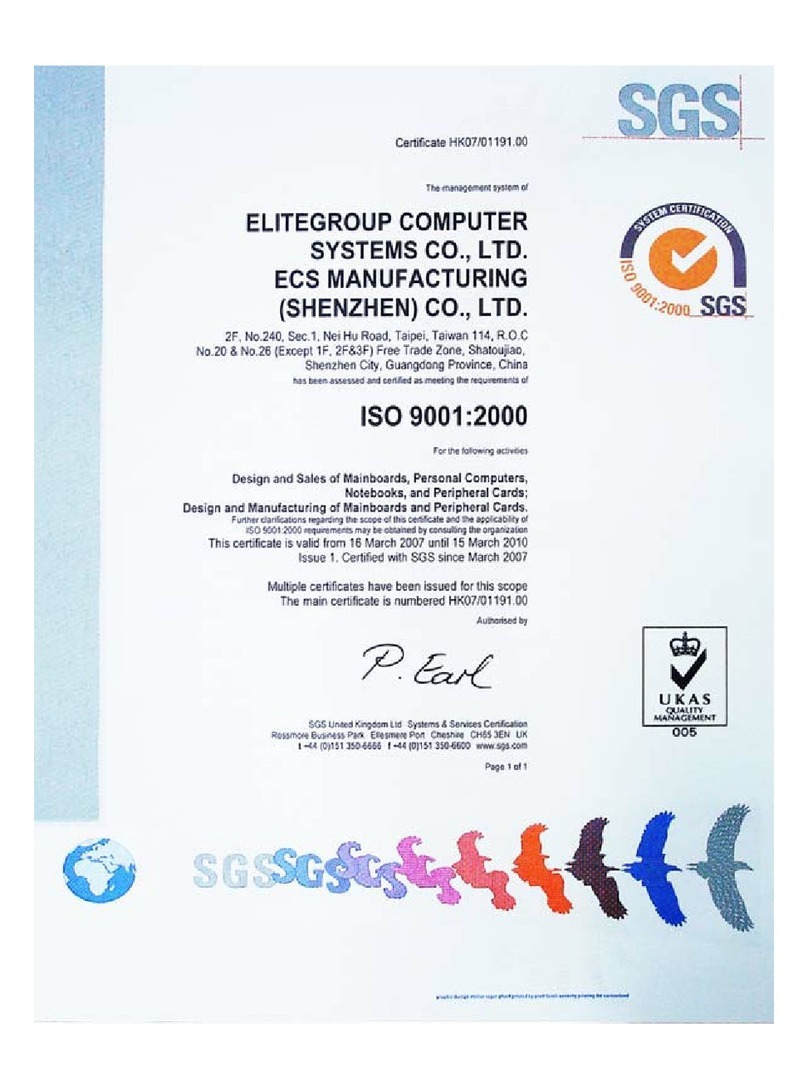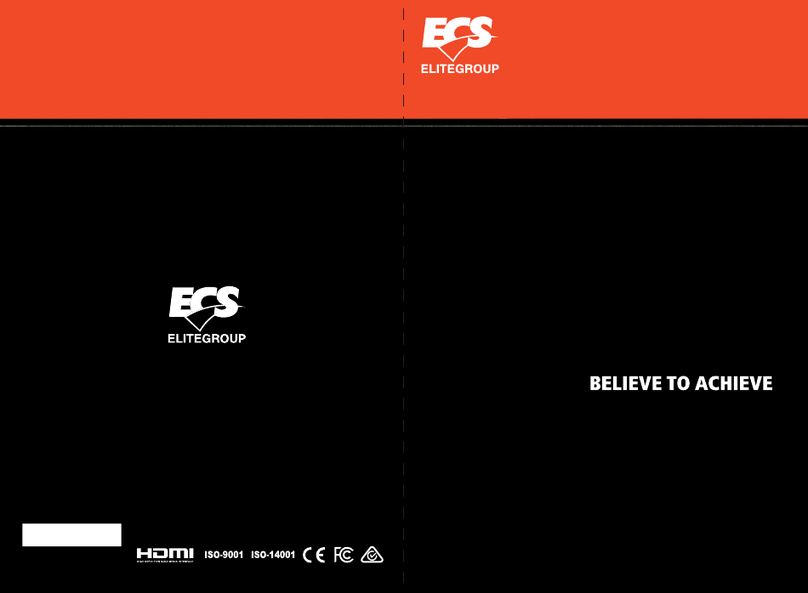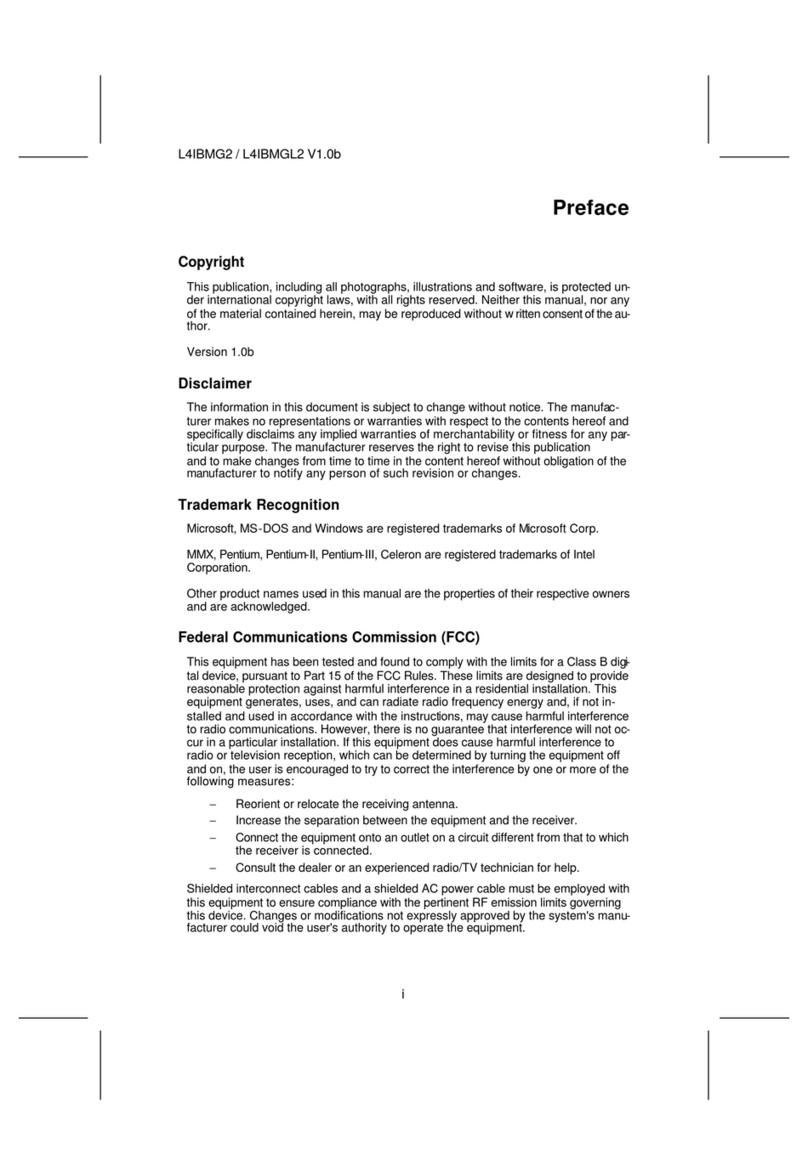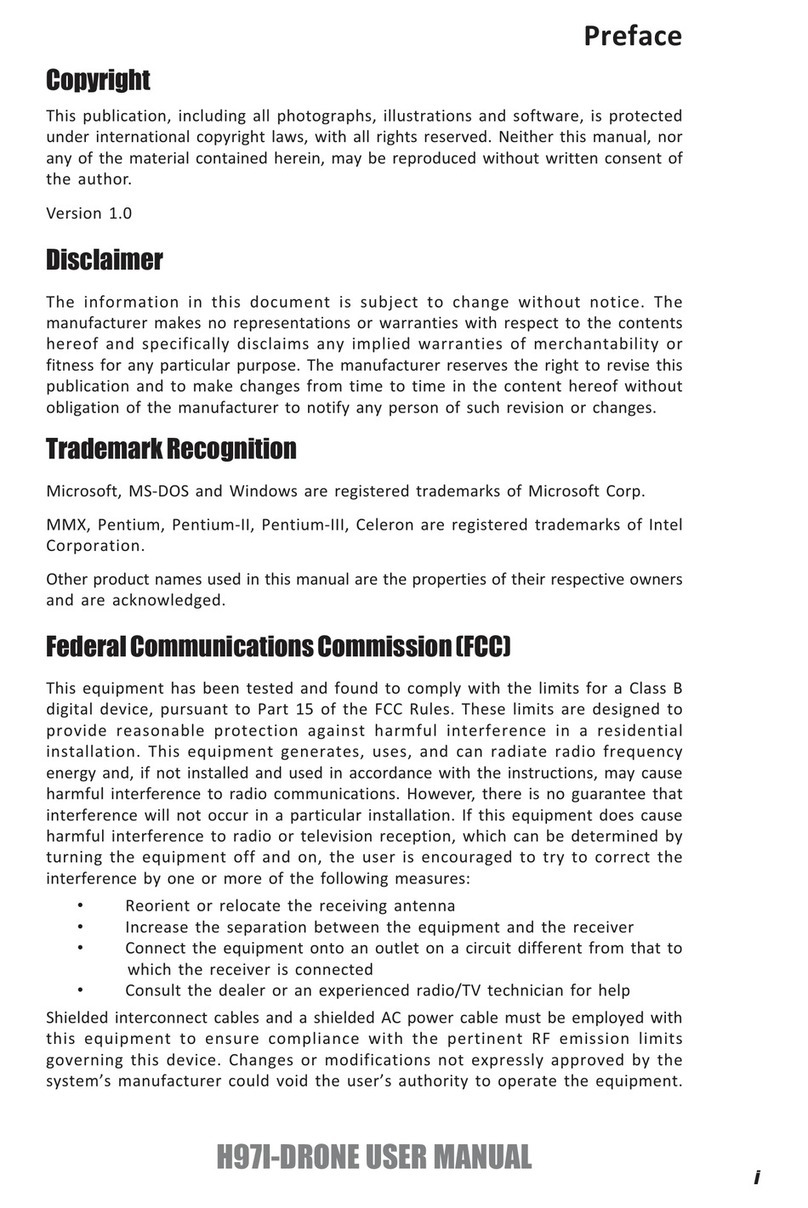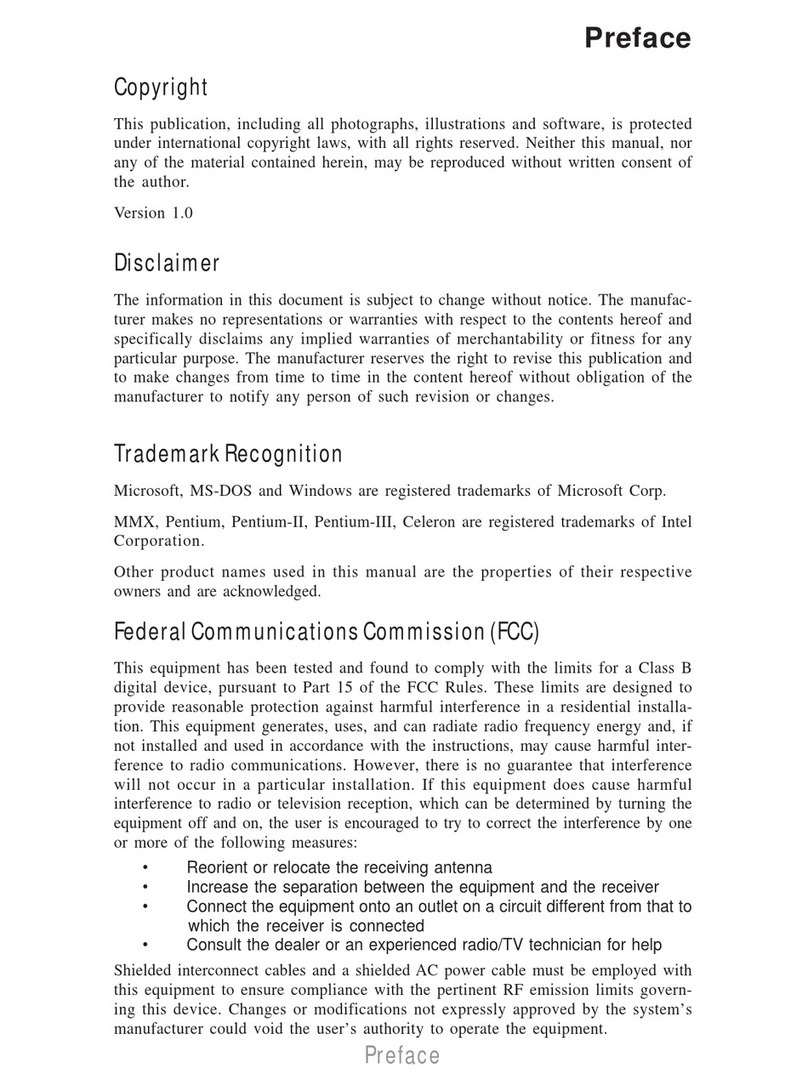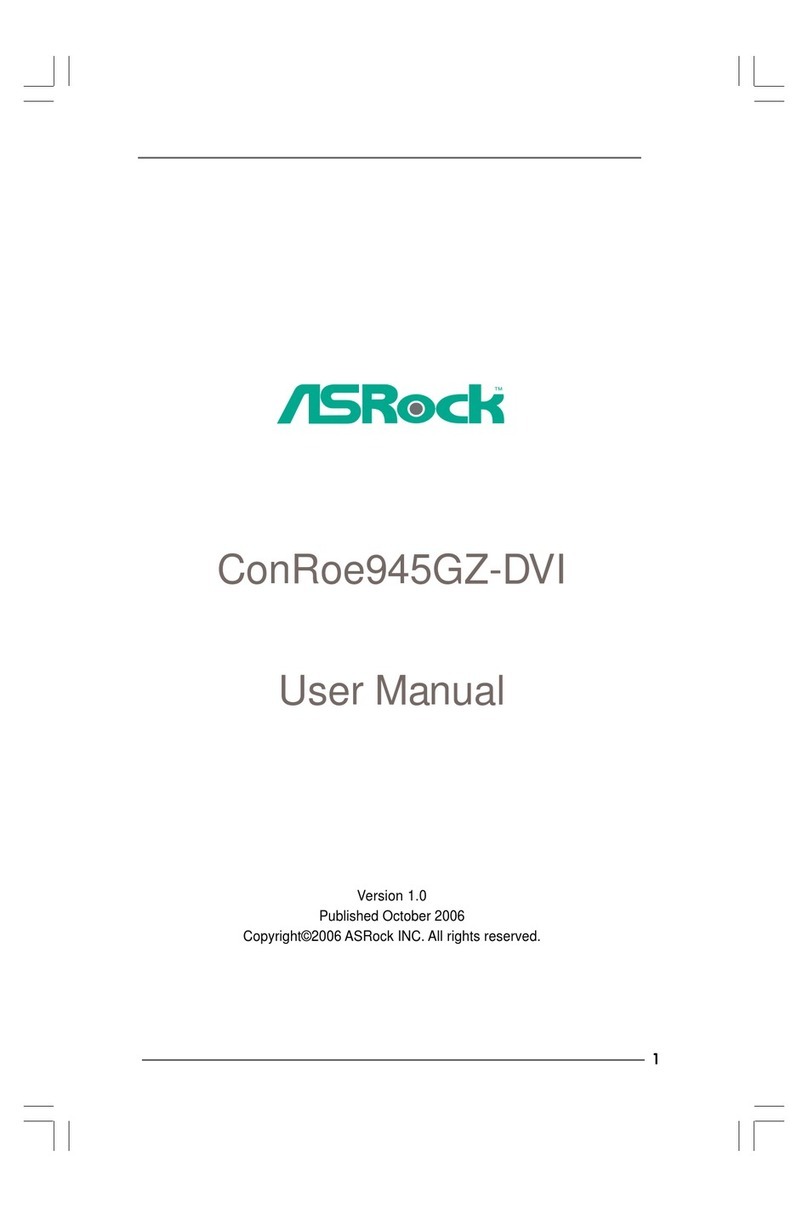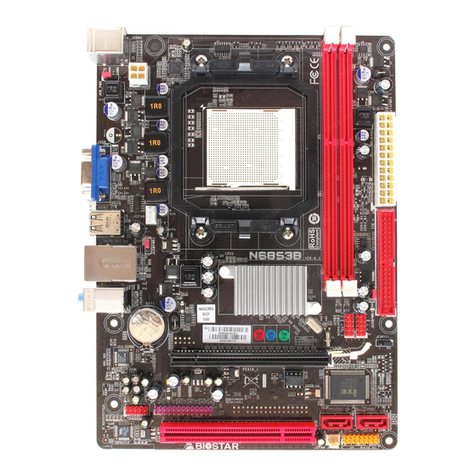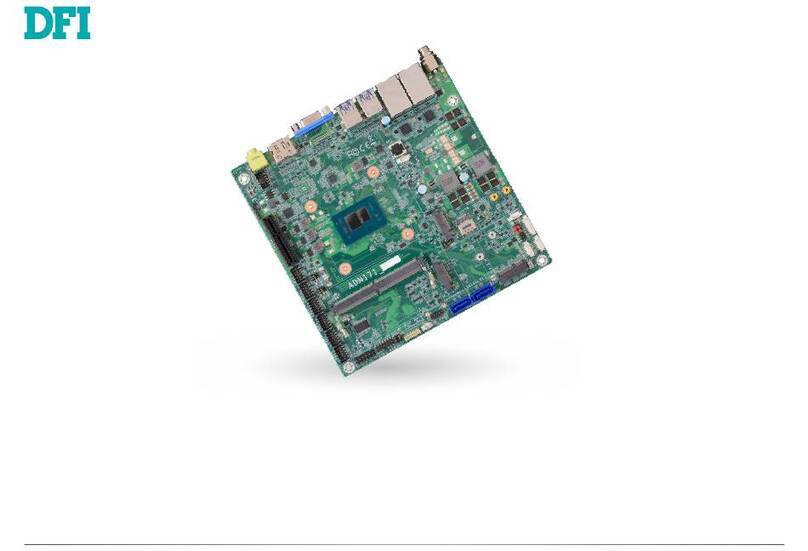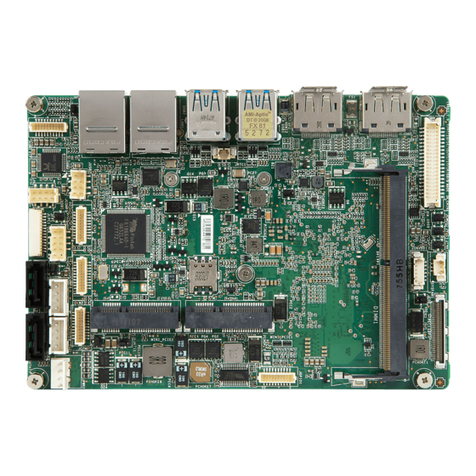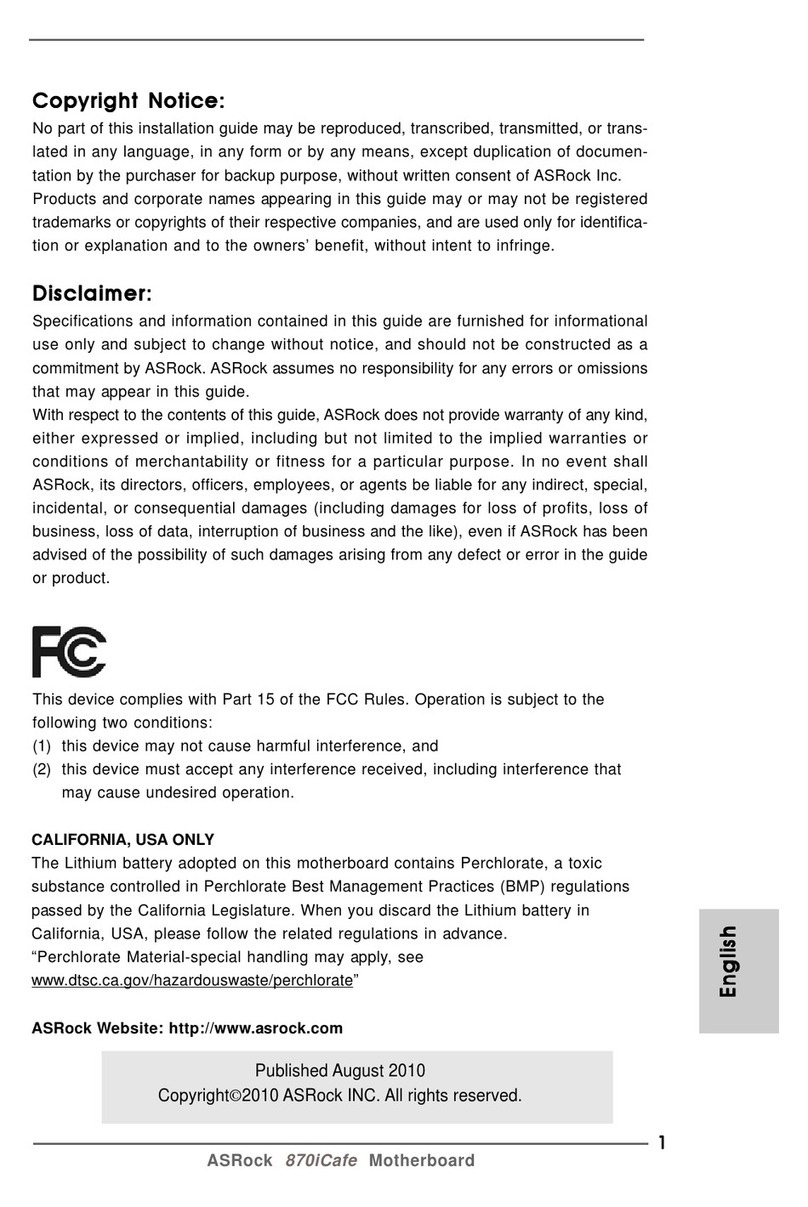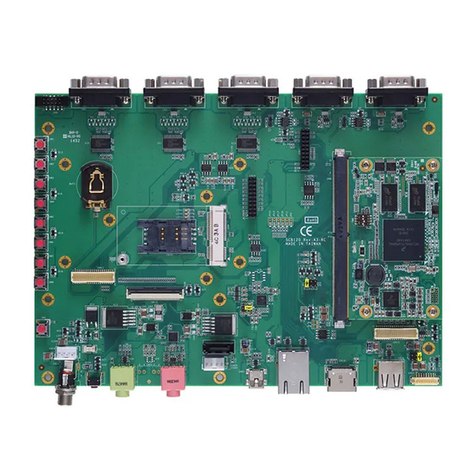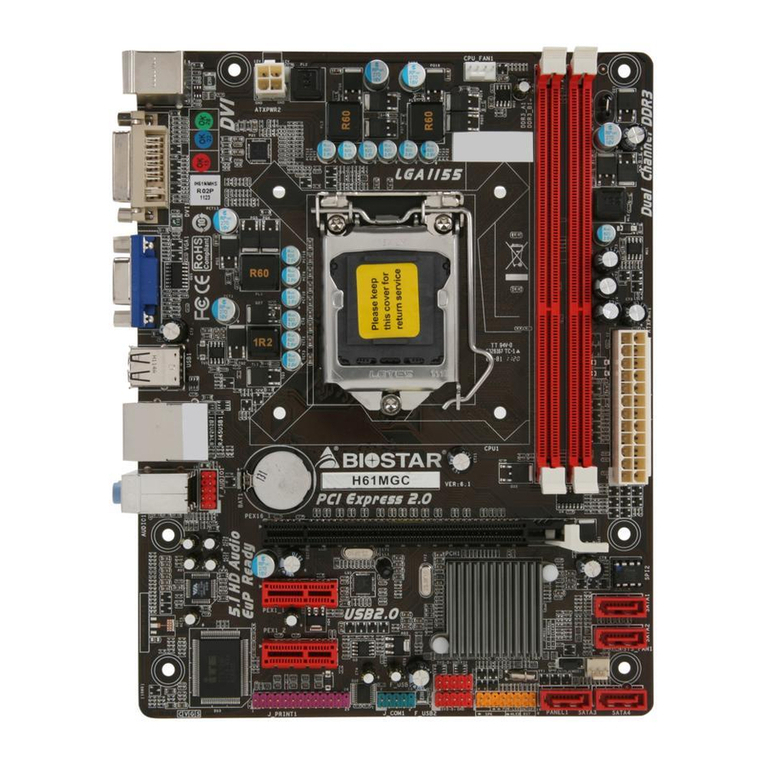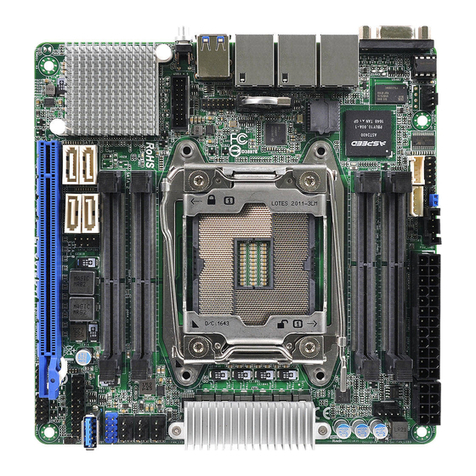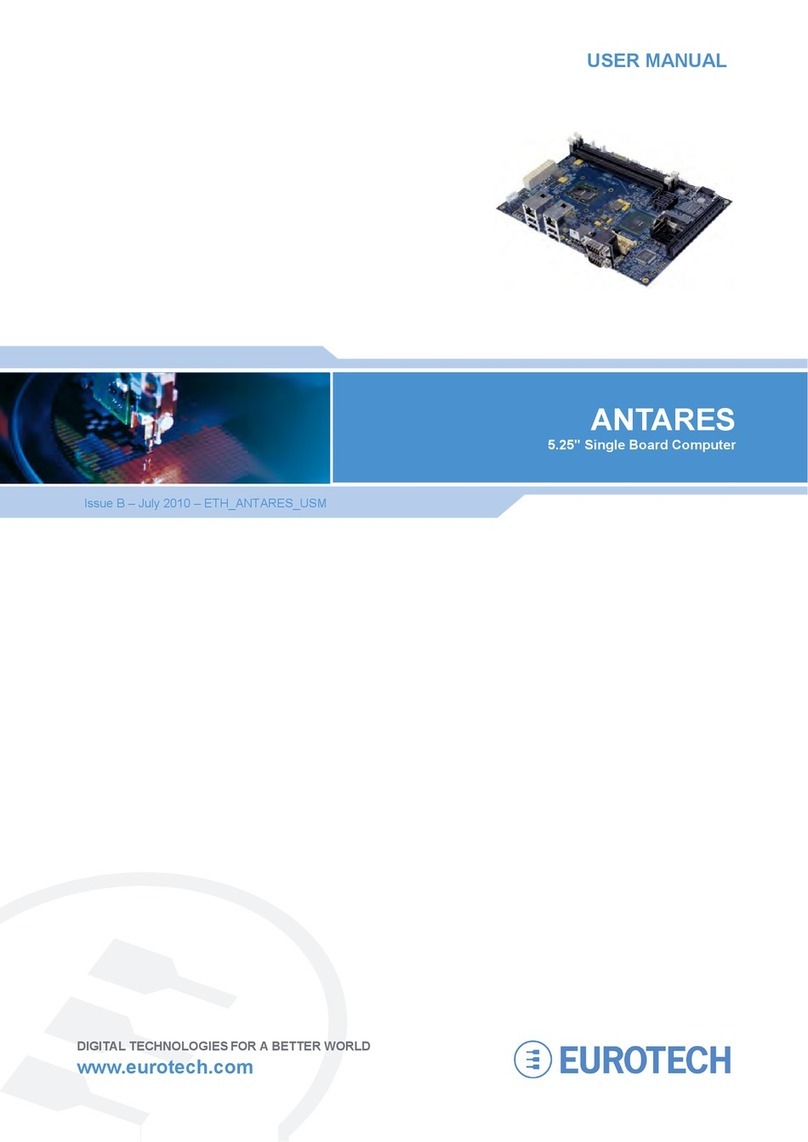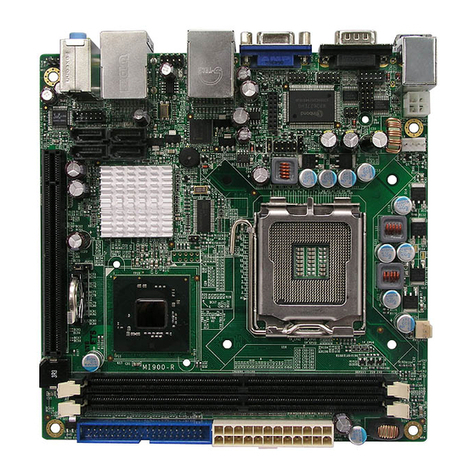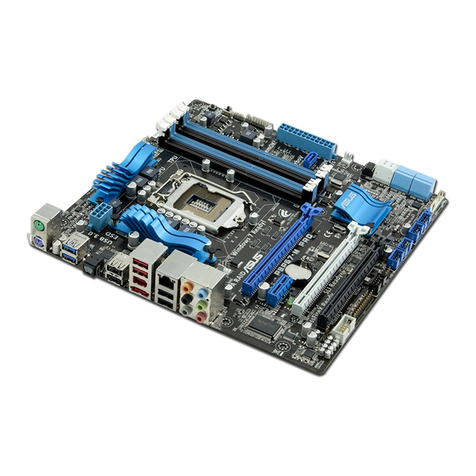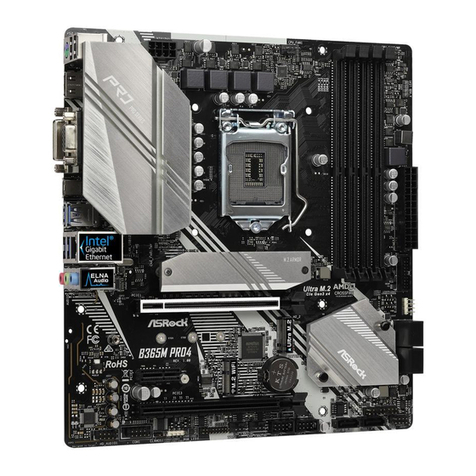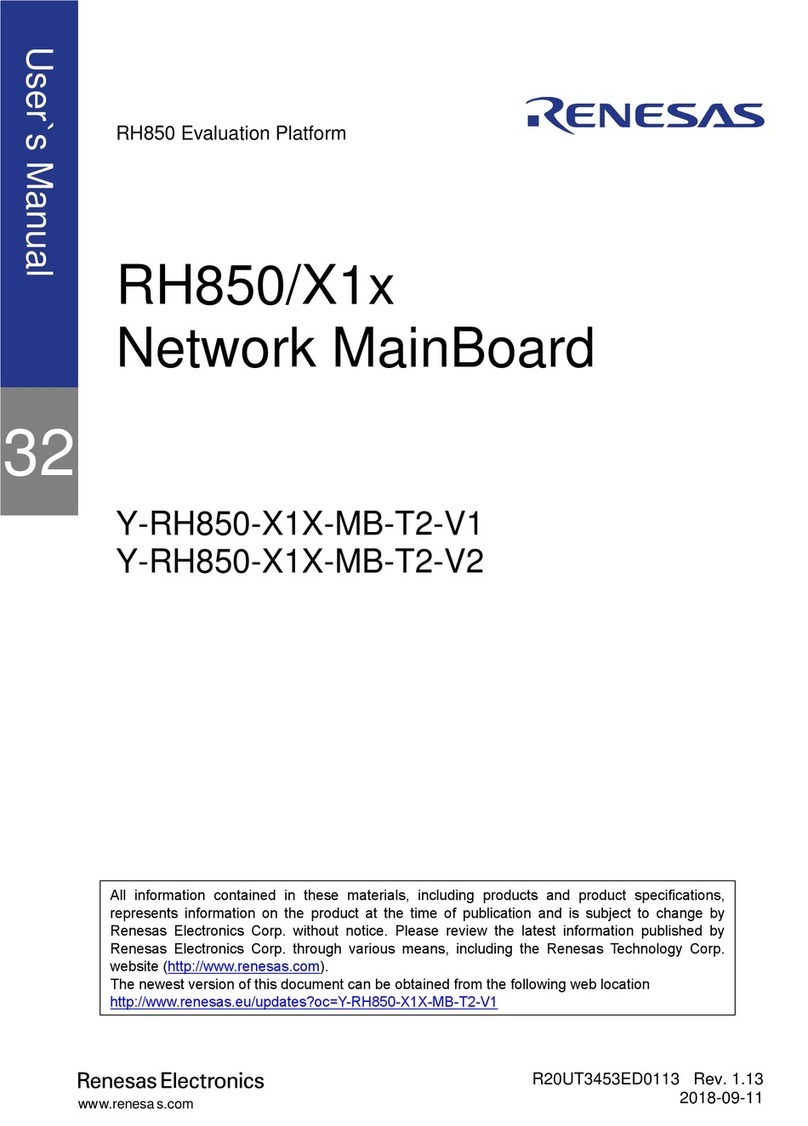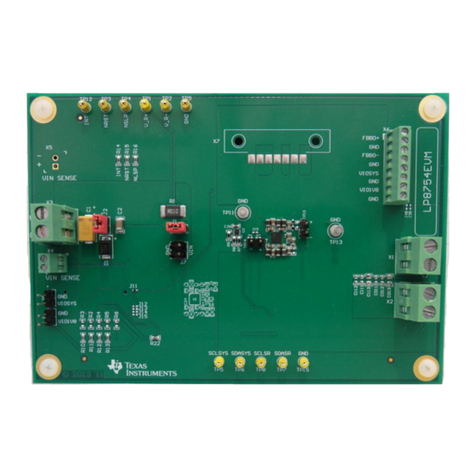ECS 945GZT-M User manual



Preface
Preface
Copyright
This publication, including all photographs, illustrations and software, is protected under
international copyright laws, with all rights reserved. Neither this manual, nor any of the
material contained herein, may be reproduced without written consent of the author.
Version 1.0C
Disclaimer
The information in this document is subject to change without notice. The manufacturer
makes no representations or warranties with respect to the contents hereof and specifically
disclaims any implied warranties of merchantability or fitness for any particular purpose.
The manufacturer reserves the right to revise this publication and to make changes from
time to time in the content hereof without obligation of the manufacturer to notify any
person of such revision or changes.
TrademarkRecognition
Microsoft, MS-DOS and Windows are registered trademarks of Microsoft Corp.
MMX, Pentium, Pentium-II, Pentium-III, Celeron are registered trademarks of Intel Cor-
poration.
Other product names used in this manual are the properties of their respective owners and
are acknowledged.
FederalCommunicationsCommission(FCC)
This equipment has been tested and found to comply with the limits for a Class B digital
device, pursuant to Part 15 of the FCC Rules. These limits are designed to provide reason-
able protection against harmful interference in a residential installation. This equipment
generates, uses, and can radiate radio frequency energy and, if not installed and used in
accordance with the instructions, may cause harmful interference to radio communications.
However, there is no guarantee that interference will not occur in a particular installation.
If this equipment does cause harmful interference to radio or television reception, which
can be determined by turning the equipment off and on, the user is encouraged to try to
correct the interference by one or more of the following measures:
• Reorient or relocate the receiving antenna
• Increase the separation between the equipment and the receiver
• Connect the equipment onto an outlet on a circuit different from that to which
the receiver is connected
• Consult the dealer or an experienced radio/TV technician for help
Shielded interconnect cables and a shielded AC power cable must be employed with this
equipment to ensure compliance with the pertinent RF emission limits governing this
device. Changes or modifications not expressly approved by the system’s manufacturer
could void the user’s authority to operate the equipment.

ii
Preface
DeclarationofConformity
This device complies with part 15 of the FCC rules. Operation is subject to the following
conditions:
• This device may not cause harmful interference, and
• This device must accept any interference received, including interference
that may cause undesired operation
CanadianDepartmentofCommunications
This class B digital apparatus meets all requirements of the Canadian Interference-causing
Equipment Regulations.
Cet appareil numérique de la classe B respecte toutes les exigences du Réglement sur le
matériel brouilieur du Canada.
AbouttheManual
The manual consists of the following:
Chapter 1
Introducing the Motherboard
Chapter 2
Installing the Motherboard
Chapter 3
UsingBIOS
Chapter 4
Using the Motherboard Software
Describes features of the motherboard.
Go to Hpage 1
Describes installation of motherboard
components.
Goto Hpage 7
Provides information on using the BIOS
Setup Utility.
Go to Hpage 27
Describes the motherboard software
Go to Hpage 43

iii
TT
TT
TABLE OF CONTENTSABLE OF CONTENTS
ABLE OF CONTENTSABLE OF CONTENTS
ABLE OF CONTENTS
Preface i
Chapter 1
1
IntroducingtheMotherboard 1
Introduction.................................................................................................1
Feature..........................................................................................................2
MotherboardComponents........................................................................4
Chapter 2 77
77
7
Installing the Motherboard 7
SafetyPrecautions......................................................................................7
Choosinga ComputerCase.......................................................................7
Installingthe Motherboard ina Case......................................................7
CheckingJumperSettings.........................................................................8
Setting Jumpers..............................................................................8
Checking Jumper Settings..............................................................9
Jumper Settings..............................................................................9
InstallingHardware...................................................................................10
Installing the Processor................................................................10
Installing Memory Modules.........................................................12
Expansion Slots............................................................................14
Connecting Optional Devices.......................................................17
Installing a Hard Disk Drive/CD-ROM/SATA Hard Drive........20
Installing a Floppy Diskette Drive...............................................21
ConnectingI/ODevices..........................................................................22
ConnectingCase Components...............................................................23
Front Panel Header......................................................................26
Chapter 3 27
UsingBIOS 27
Aboutthe SetupUtility...........................................................................27
The Standard Configuration.........................................................27
Entering the Setup Utility..............................................................27
UsingBIOS................................................................................................28
Standard CMOS Setup.................................................................29
Advanced Setup............................................................................31
Advanced Chipset Setup...............................................................33

iv
Integrated Peripherals......................................................................34
Power Management Setup................................................................35
PCI/ PnP Configuration....................................................................37
PC Health Status...............................................................................38
Frequency/Voltage Control................................................................39
Load Optimal Defaults......................................................................40
Supervisor Password........................................................................40
User Password..................................................................................41
Save & Exit Setup..............................................................................41
Exit Without Saving...........................................................................41
Updating the BIOS............................................................................42
Chapter 4 4343
4343
43
UsingtheMotherboardSoftware 43
AbouttheSoftwareCD-ROM................................................................43
Auto-installingunderWindows 2000/XP.............................................43
Running Setup...................................................................................44
ManualInstallation..................................................................................46
UtilitySoftwareReference......................................................................46

1
IntroducingtheMotherboard
Chapter1
IntroducingtheMotherboard
Introduction
Thank you for choosing the 945GZT-M motherboard. This motherboard is a high perfor-
mance, enhanced function motherboard designed to support the LGA775 socket Intel
CoreTM 2 Duo/Pentium D/Pentium 4/Celeron D processors for high-end business or personal
desktop markets.
The motherboard incorporates the 945GZ Northbridge (NB) and ICH7 Southbridge (SB)
chipsets. The Northbridge supports a Front Side Bus (FSB) frequency of 800/533 MHz using
a scalable FSB Vcc_CPU. The memory controller supports DDR2 memory DIMM frequen-
cies of 533/400. It supports two DDR2 Sockets with up to maximum memory of 2 GB.
DDR2 Maximum memory bandwidth of 8.5 Gb/s in dual-channel interleaved mode assuming
DDR2 533 MHz. High resolution graphics via one PCI Express slot, intended for Graphics
Interface, is fully compliant to the PCI Express Base Specification revision 1.0a.
The ICH7 Southbridge supports two PCI slots which are PCI v2.3 compliant. It implements
an EHCI compliant interface that provides 480 Mb/s bandwidth for eight USB 2.0 ports.
One onboard IDE connector supports 2 IDE devices in Ultra ATA 100/66/33 mode. The
Southbridge integrates a Serial ATA host controller, supporting four SATA ports with maxi-
mum transfer rate up to 3.0 Gb/s each.
The motherboard is equipped with advanced full set of I/O ports in the rear panel, including
PS/2 mouse and keyboard connectors, COM1, one optional LPT port, one VGA port, four
USB ports, one LAN port and audio jacks for microphone, line-in and line-out.

2
IntroducingtheMotherboard
Feature
The motherboard uses an LGA775 type of Intel CoreTM 2 Duo/Pentium D/Pentium 4/
Celeron D that carries the following features:
Processor
The 945GZ Northbridge (NB) and ICH7 Southbridge (SB) chipsets are based on an
innovative and scalable architecture with proven reliability and performance.
Chipset
ICH7 (SB) • EnhancedDMAController,interruptcontroller,andtimerfunc-
tions
• Compliant with PCI Express Base Specification, Revision
1.0a
• Compliant with PCI v2.3 specification
• Integrated SATA 3.0 Gb/s Host Controller
• Integrated USB 2.0 Host Controller supporting up to eight
USB 2.0 ports
• Integrated IDE controller supports Ultra ATA 100/66/33
• Supports DDR2 533/400 DDR SDRAM with Dual-channel architecture
• Accommodates two unbuffered DIMMs
• Up to 1 GB per DIMM with maximum memory size up to 2 GB
Memory
945GZ (NB)
“Hyper-Threading” technology enables the operating system into thinking it’s hooked
up to two processors, allowing two threads to be run in parallel, both on separate
“logical” processors within the same physical processor.
• Supports 32-bit host bus addressing, allowing the CPU to
access the entire 2 GB of the memory address space.
• 2GB/s point-to-point Direct MediaInterface (DMI) toICH7 (1
GB/s)each direction.
• Supports 256-Mb, 512-Mb and 1-Gb DDR2 technologies for
x8 and x16 devices
• Supports high quality 3D setup, Render Engine and high-
quality texture engine
Audio
• 5.1 Channel High DefinitionAudio Codec
• All DACs support 192K/96K/48K/44.1KHz sample rate
• Software selectable 2.5V/3.75V VREFOUT
• Meets Microsoft WHQL/WLP 2.x audio requirements
• Direct Sound 3DTM compatible
• Accommodates Intel CoreTM 2 Duo/Pentium D/Pentium 4/Celeron D proces-
sors
• Supports a system bus (FSB) of 800/533 MHz
• Supports “Hyper-Threading” technology CPU

3
IntroducingtheMotherboard
The motherboard comes with the following expansion options:
Onboard LAN (Optional)
• One PCI Express Lite for Graphic Interface
• Two 32-bit PCI v2.3 compliant slots
• One 40-pin IDE connector that support two IDE devices
• One floppy disk drive interface
• Four 7-pin SATA connectors
Expansion Options
The motherboard supports UDMA bus mastering with transfer rates of 100/66/33 Mb/
s.
• Integrated 10/100/1000 transceiver
• Supports PCI v2.3, 32-bit, 33/66 MHz
• Supports wake-On-LAN (WOL) function and remote wake-up
The onboard LAN controller provides the following features:
The firmware can also be used to set parameters for different processor clock speeds.
• Power management
• Wake-up alarms
• CPUparameters
• CPUandmemorytiming
BIOS Firmware
This motherboard uses AMI BIOS that enables users to configure many system
features including the following:
• Two PS/2 ports for mouse and keyboard
• One serial port
• One LPT port (optional)
• One VGA port
• Four USB ports
• One LAN port
• Audio jacks for microphone, line-in andl line-out
The motherboard has a full set of I/O ports and connectors:
Integrated I/O
• Supports 10/100 Mb/s N-Way Auto negotiation operation
• Half/Full duplex capacity
• Supports wake-On-LAN (WOL) function and remote wake-up
1. Some hardware specifications and software items are subject to change
without prior notice.
2. Due to chipset limitation, we recommend that motherboard be oper-
ated in the ambiance between 0 and 50 °C.

4
IntroducingtheMotherboard
MotherboardComponents

5
IntroducingtheMotherboard
Table of Motherboard Components
This concludes Chapter 1. The next chapter explains how to install the motherboard.
LABEL COMPONENTS
1. CPU Socket LGA775 socket for Intel CoreTM 2 Duo/Pentium
D/Pentium 4/Celeron D CPUs
2. CPU_FAN CPU cooling fan connector
3. DIMM1/3 240-pin DDR2 SDRAM slots
4. FDD Floppy disk drive connector
5. ATX1 Standard 24-pin ATX power connector
6. IDE1 Primary IDE connector
7. SATA1~4 Serial ATA connectors
8. F_PANEL Front panel switch/LED header
9. CLR_CMOS1 Clear CMOS jumper
10. F_USB1~2 Front Panel USB headers
11. PWR_FAN* Power cooling fan connector
12. SPDIFO SPDIF out header
13. F_AUDIO Front panel audio header
14. CD_IN Analog audio input connector
15. PCI1~2 32-bit add-on card slots
16. PCIEX4 PCI Express Lite for graphics interface
17. SYS_FAN System cooling fan connector
18. LPT port * onboard parallel port
19. ATX12V Auxiliary 4-pin power connector
“*” stands for optional components.

6
IntroducingtheMotherboard
Memo

7
InstallingtheMotherboard
Chapter2
InstallingtheMotherboard
SafetyPrecautions
• Follow these safety precautions when installing the motherboard
• Wear a grounding strap attached to a grounded device to avoid damage from
static electricity
• Discharge static electricity by touching the metal case of a safely grounded
object before working on the motherboard
• Leave components in the static-proof bags they came in
• Hold all circuit boards by the edges. Do not bend circuit boards
ChoosingaComputer Case
There are many types of computer cases on the market. The motherboard complies with
the specifications for the Micro ATX system case. First, some features on the motherboard
are implemented by cabling connectors on the motherboard to indicators and switches on
the system case. Make sure that your case supports all the features required. Secondly, this
motherboard supports one floppy diskette drive and two enhanced IDE drives. Make sure
that your case has sufficient power and space for all drives that you intend to install.
Most cases have a choice of I/O templates in the rear panel. Make sure that the I/O template
in the case matches the I/O ports installed on the rear edge of the motherboard.
This motherboard carries a Micro ATX form factor of 244 x 220 mm. Choose a case that
accommodates this form factor.
Installingthe Motherboard ina Case
Refer to the following illustration and instructions for installing the motherboard in a case.
Most system cases have mounting brackets installed in the case, which correspond the holes
in the motherboard. Place the motherboard over the mounting brackets and secure the
motherboard onto the mounting brackets with screws.
Ensure that your case has an I/O template that supports the I/O ports and expansion slots
on your motherboard.

8
InstallingtheMotherboard
CheckingJumperSettings
This section explains how to set jumpers for correct configuration of the motherboard.
SettingJumpers
Use the motherboard jumpers to set system configuration options. Jumpers with more than
one pin are numbered. When setting the jumpers, ensure that the jumper caps are placed on
the correct pins.
The illustrations show a 2-pin jumper. When
the jumper cap is placed on both pins, the
jumper is SHORT. If you remove the jumper
cap, or place the jumper cap on just one pin,
the jumper is OPEN.
This illustration shows a 3-pin jumper. Pins
1 and 2 are SHORT.
SHORT OPEN
Do not over-tighten the screws as this can stress the motherboard.

9
InstallingtheMotherboard
Checking Jumper Settings
The following illustration shows the location of the motherboard jumpers. Pin 1 is labeled.
JumperSettings
Jumper Type Description Setting (default)
CLR_CMOS1 3-pin Clear CMOS
1-2: CLEAR CMOS
2-3: NORMAL
Before clearing the
CMOS, make sure to
turn off the system.
1
CLR_CMOS1
To avoid the system unstability after clearing CMOS, we recommend users
to enter the main BIOS setting page to “Load Optimal Defaults ” and
then “Save Changes and Exit”.

10
InstallingtheMotherboard
InstallingHardware
Installing the Processor
Caution: When installing a CPU heatsink and cooling fan make sure that
you DO NOT scratch the motherboard or any of the surface-mount resistors
with the clip of the cooling fan. If the clip of the cooling fan scrapes across
the motherboard, you may cause serious damage to the motherboard or its
components.
On most motherboards, there are small surface-mount resistors near the
processor socket, which may be damaged if the cooling fan is carelessly
installed.
Avoid using cooling fans with sharp edges on the fan casing and the clips.
Also, install the cooling fan in a well-lit work area so that you can clearly see
the motherboard and processor socket.
Fail-Safe Procedures for Over-clocking
When end-users encounter failure after attempting over-clocking, please take the follow-
ing steps to recover from it.
1. Shut down the computer.
2. Press and hold the “Page Up Key (PgUp)” of the keyboard, and then boot the PC up.
3. Two seconds after the PC boots up, release the “Page Up Key (PgUp)”.
4. The BIOS returns to the default setting by itself.
1. Over-clocking components can adversely affect the reliability of the sys-
tem and introduce errors into your system. Over-clocking can permanently
damage the motherboard by generating excess heat in components that are
run beyond the rated limits.
2. Always remove the AC power by unplugging the power cord from the
power outlet before installing or removing the motherboard or other hard-
ware components.
Warning:
Before installing the Processor
This motherboard has an LGA775 socket. When choosing a processor, consider the perfor-
mance requirements of the system. Performance is based on the processor design, the clock
speed and system bus frequency of the processor, and the quantity of internal cache memory
and external cache memory.
This motherboard automatically determines the CPU clock frequency and system bus
frequency for the processor. You may be able to change the settings in the system Setup
Utility. We strongly recommend that you do not over-clock processors or other compo-
nents to run faster than their rated speed.

11
InstallingtheMotherboard
A. Read and follow the instructions shown on the
sticker on the CPU cap.
B. Unload the cap
· Use thumb & forefinger to hold the
lifting tab of the cap.
· Lift the cap up and remove the cap
completely from the socket.
C. Open the load plate
· Use thumb & forefinger to hold the
hook of the lever, pushing down and pulling
aside unlock it.
· Lift up the lever.
· Use thumb to open the load plate. Be
careful not to touch the contacts.
D. Install the CPU on the socket
· Orientate CPU package to the socket.
Make sure you match triangle marker
to pin 1 location.
E. Close the load plate
· Slightly push down the load plate onto the
tongue side, and hook the lever.
· CPUis locked completely.
F. Apply thermal grease on top of the CPU.
G. Fasten the cooling fan supporting base onto
the CPU socket on the motherboard.
H. Make sure the CPU fan is plugged to the
CPU fan connector. Please refer to the CPU
cooling fan user’s manual for more detail
installation procedure.
CPU Installation Procedure
The following illustration shows CPU installation components.
1. To achieve better airflow rates and heat dissipation, we suggest that you
use a high quality fan with 3800 rpm at least. CPU fan and heatsink
installation procedures may vary with the type of CPU fan/heatsink sup
plied. The form and size of fan/heatsink may also vary.
2. DO NOT remove the CPU cap from the socket before installing a CPU.
3. Return Material Authorization (RMA) requests will be accepted only if the
motherboard comes with thecap on the LGA775 socket.

12
InstallingtheMotherboard
Installing Memory Modules
This motherboard accommodates two memory modules. It can support two 240-pin DDR2
533/400. The total memory capacity is 2 GB.
You must install at least one module in any of the two slots. Each module can be installed
with 256 MB to 1 GB of memory; total memory capacity is 2 GB.
Do not remove any memory module from its antistatic packaging until you
are ready to install it on the motherboard. Handle the modules only by
their edges. Do not touch the components or metal parts. Always wear a
grounding strap when you handle the modules.
Installation Procedure
Refer to the following to install the memory modules.
1 This motherboard supports unbuffered DDR2 SDRAM .
2 Push the latches on each side of the DIMM slot down.
3 Align the memory module with the slot. The DIMM slots are keyed with notches
and the DIMMs are keyed with cutouts so that they can only be installed
correctly.
4 Checkthat the cutouts on the DIMM moduleedge connector matchthe notches
inthe DIMM slot.
5 Install the DIMM module into the slot and press it firmly down until it seats
correctly. The slot latches are levered upwards and latch on to the edges of
theDIMM.
6 Installany remaining DIMM modules.
DDR2 SDRAM memory module table
DDR2 533 266 MHz
Memory module Memory Bus
DDR2 400 200 MHz

13
InstallingtheMotherboard
Table A: DDR2(memory module) QVL (Qualified Vendor List)
The following DDR2 533/400 memory modules have been tested and qualified for use with
this motherboard.
Type Size Vendor Module Name
256 MB Samsung M378T3354BZ0-CCC
K4T51163QB-ZCCC
Samsung M378T6553BG0-CCC
K4T51083QB-GCCC
DDR2 400 512 MB Twinmos Samsung K4T51083QB-GCCC
Corsair Aeneon AET94F-370
Corsair VC256MB533D2
4PB11D9CHM
Elpida Elpida E2508AA-DF-E
Elpida Japan E2508AA-T7F-E
Hynix Hynix HY5PS121621
Kingmax Hynix HY5PS121621
Kingston Elpida E5116F-5C-E
Kingston Infineon KVR533D2N4/256
HYB18T51260AF-3.7
Nanya Nanya NT5TU32M16AG-37B
Ramaxel Elpida D5116AF-5C-E
Ramaxel 5PB42 D9DCD
256 MB
Twinmos Elpida E2508AA-DF-E
Aeneon AET93F370 512MB SS
Corsair Samsung K4T51083QB-ZCD5
Corsair VS512MB533D2 64M8CEC
Hynix HY5PS12821
Infineon HY818T512800AF37 33346778
Kingston Hynix HYB18T512800AF37
Kingston Hynix HY5PS12821
Kingston Nanya NT5TU64M8AE-37B
Ramaxel Elpida E5108AG-5C-E
Ramaxel 5PB32 D9DCN
Samsung PC2-4200U-4444-10-B1
K4T51083QF-ZCD5
Samsung PC2-4200U-4444-12-DS
K4T51083QC
Twinmos Elpida E5108AB-5C-E
512 MB
Twinmos Samsung 8D22JB-KM
A-DATA Vitesta M2OAD2G3I4170F1B52
Apacer Elpida E5108AB-5C-E
Geil A016E2864T2AG8AKT5H120001
Infineon HY818T512800AF37 33344539
Kingmax KKEA88E4AAKG-37
DDR2 533
1 GB
UMAX U2S12D30TP-5C

14
InstallingtheMotherboard
Before installing an add-on card, check the documentation for the card care-
fully. If the card is not Plug and Play, you may have to manually configure the
card before installation.
This motherboard is equipped with two standard PCI slots. PCI stands for
Peripheral Component Interconnect and is a bus standard for expansion
cards, which for the most part, is a supplement of the older ISA bus standard.
The PCI slots on this board are PCI v2.3 compliant.
PCI 1~2
Slots
PCIEX4
Lite The PCI Express Lite is used to install an external PCI Express graphics card
that is fully compliant to the PCI Express Base Specification revision 1.0a.
The slots on this motherboard are designed to hold expansion cards and connect them to the
system bus. Expansion slots are a means of adding or enhancing the motherboard’s features
and capabilities. With these efficient facilities, you can increase the motherboard’s capa-
bilities by adding hardware that performs tasks that are not part of the basic system.
InstallingAdd-onCards
Expansion Slots
Table of contents
Other ECS Motherboard manuals
